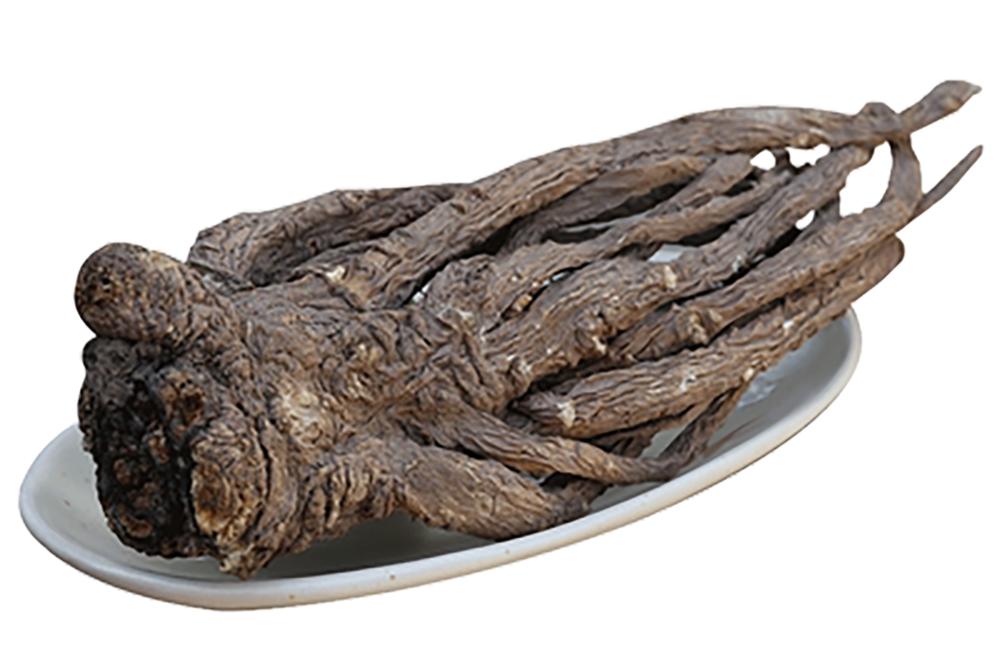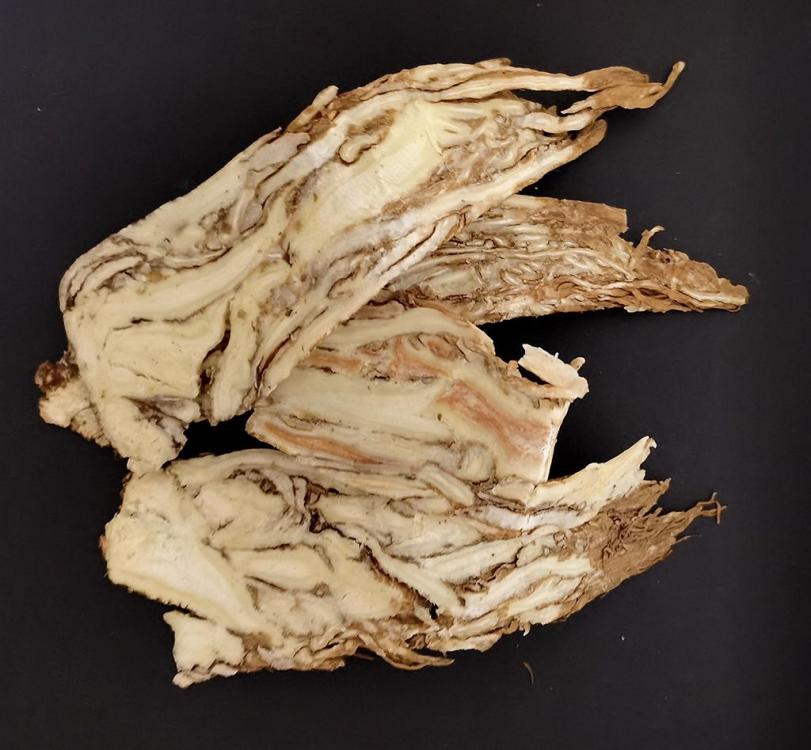36. 当归 (dāng guī) – Chinese Angelica – Angelica Sinensis

Angelica Sinensis Root
There are over 60 types of angelica, which is a tall herbaceous plant that grows at high altitudes across the northern hemisphere, even being found in Northern Greenland and Iceland. Most, however, is to be found in China.
The plants are noted for their floral fragrance, but that varies from species to species. Most angelica is used in medicines. The species that most people are familiar with is Angelica archangelica which is used in many alcoholic drinks, such as gin, absinthe, Chartreuse and Bénédictine etc. while the stems are often candied and dyed to decorate cakes etc.
But it is Chinese angelica which concerns us today. This is 当归 (dāng guī) or Angelica Sinensis. Less fragrant than A. archangelica, this is again mainly used in TCM, but the dried roots are also used in Chinese cuisine by being ground and used in some spice mixes such as the 13-spice mixture I mentioned before.
The roots are also dried and served in slices or small pieces to be added to hotpots and soups etc. It has a slightly floral, but bitter flavour and is reminiscent of juniper berries.
Dried sliced Angelica sinensis root
It is important for me to note that Angelica sinensis should not be eaten during pregnancy or by anyone planning to become pregnant as, according to this 2020 report from the US Library of Medicine, there is evidence that it can affect the muscles of the uterus, so inducing miscarriage.
Another species used in China is 白芷 (bái zhǐ), Angelica dahurica. This is also aromatic but bitter. It has a nettle-like smell and is mainly used in distilled liquors. I know of no kitchen uses nor do I see it very often. Many other species are used only in TCM.




